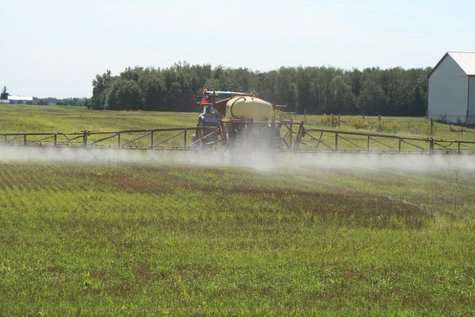A number of contributing factors resulted in this damage, says Kevin Bradley
By Patrick Lynch, CCA-ON
Farms.com
Last year, dicamba-tolerant soybeans (Roundup Ready 2 Xtend®) were introduced into the United States. The seed had received regulatory approval but the new formulations of the herbicide had not. Some growers decided to apply the older formulations of dicamba to their crops, which resulted in a lot of off-target damage to crops.
A number of important points were raised in the discussion by Kevin Bradley, associate professor of plant scientists at the University of Missouri. Dicamba-tolerant cotton was planted in the same area as the Roundup Ready 2 Xtend soybeans.
Due to weed problems in cotton, it was reported this cotton was sprayed more than once with dicamba at higher rates than we use or are registered for use in the U.S. Some of these applications were in June – when weather patterns are more apt to cause off-target movement.
Next, the newer, less volatile dicamba formulations that are available to Ontario producers this year were not available to the American growers last year. It appears these farmers may not have paid enough attention to weather conditions at time of spraying or weather after spraying, resulting in off-target damage.

There will be lots of information this winter and in season as to how to correctly and effectively apply the newer dicamba formulations.
Bradley presented this research at the South West Ag Conference (SWAC), held Jan. 4 to 5 at the Ridgetown Campus of the University of Guelph.